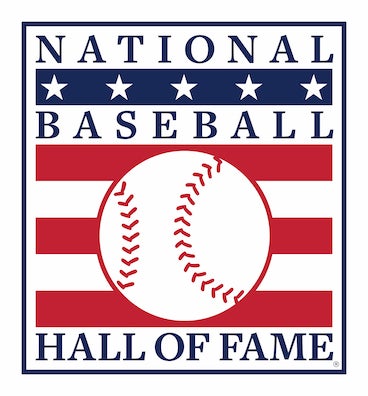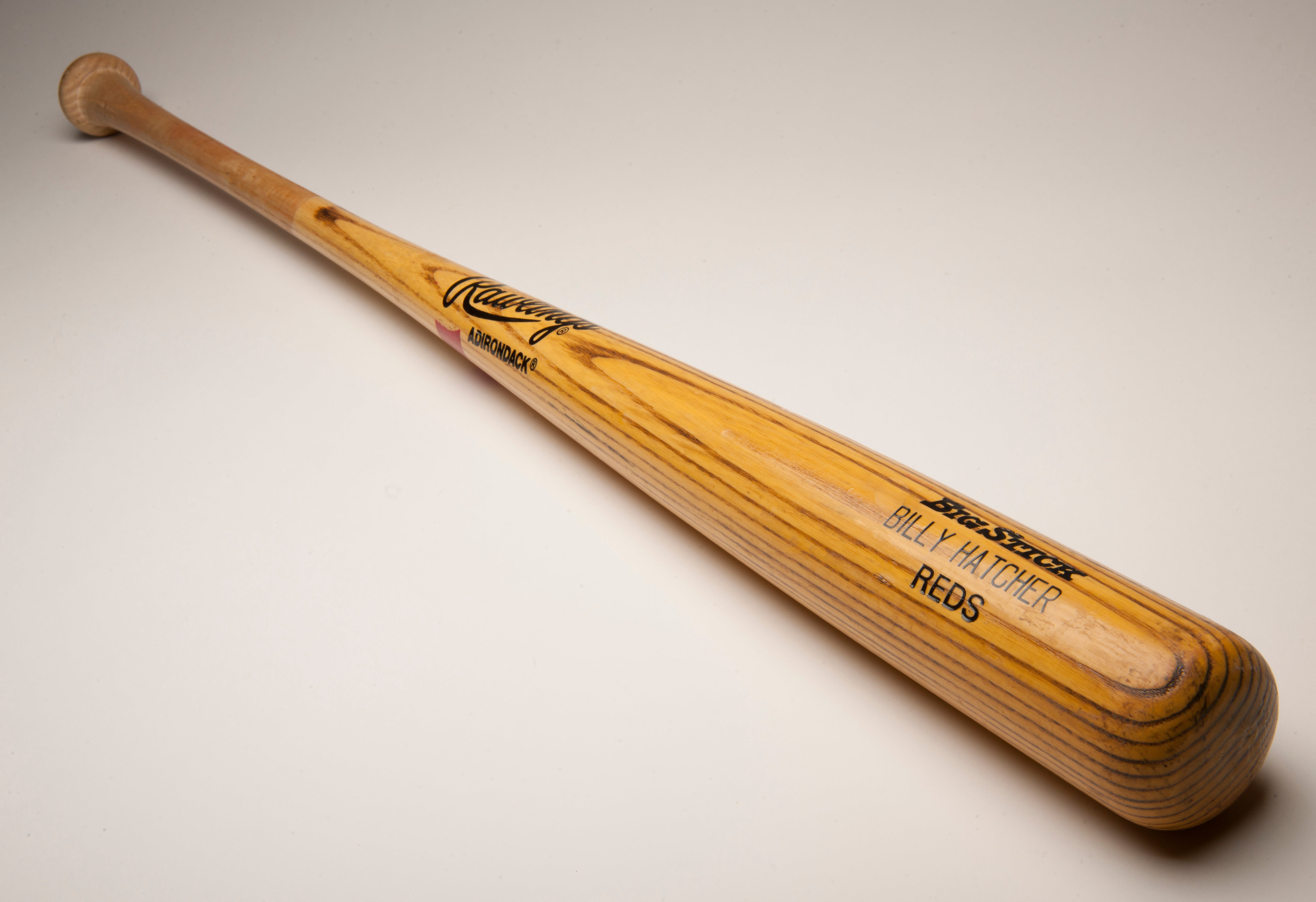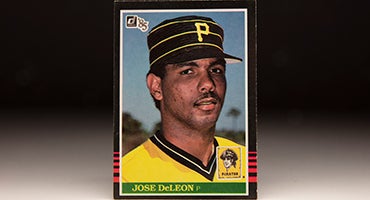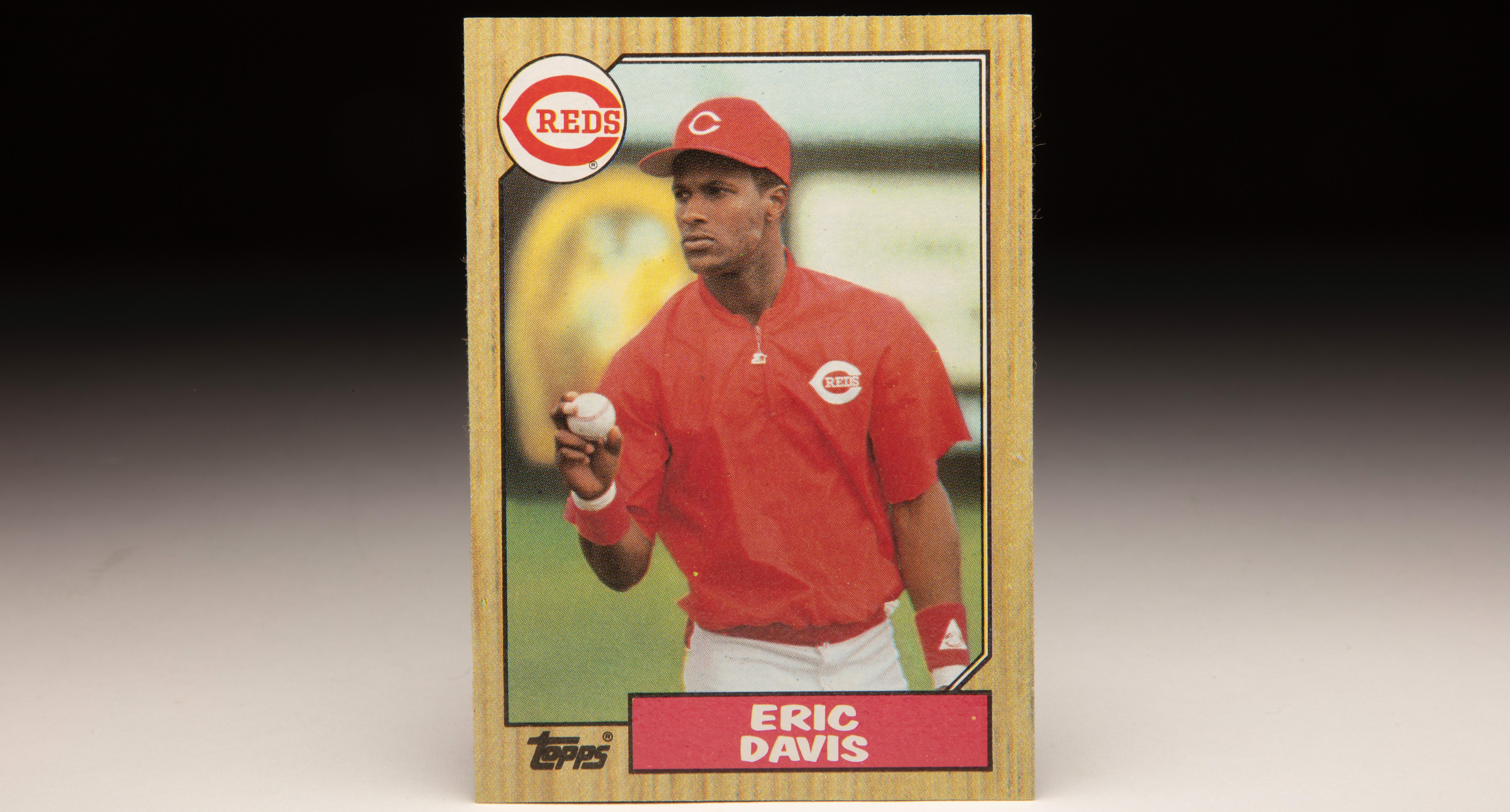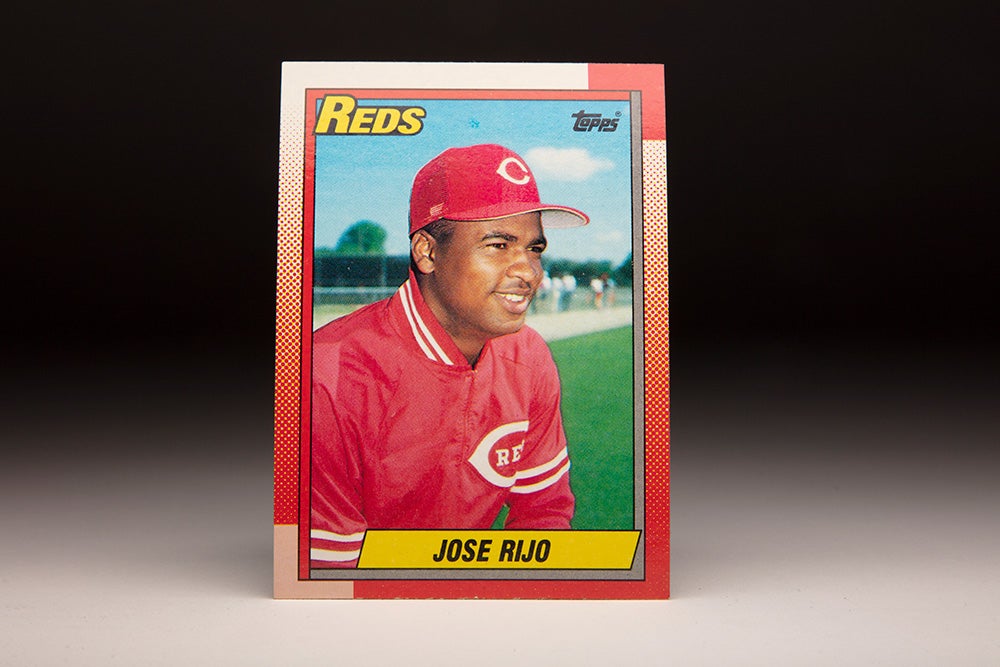#CardCorner: 1985 Donruss Billy Hatcher
Billy Hatcher was a .264 career hitter over 12 big league seasons, compiling a noteworthy-but-unspectacular 1,146 hits in the major leagues.
But for four days in October of 1990, Hatcher was the most successful batter in World Series history.
William Augustus Hatcher was born Oct. 4, 1960, in Williams, Ariz. – about 30 miles west of Flagstaff along Interstate 40. One of 12 children of Harold and Gracie Hatcher, he was a gifted amateur athlete, excelling in football, basketball, track and baseball at Williams High School.
“The most extraordinary thing about him,” football coach Rich Hoyt told the Arizona Republic in 1979, “is that with all this success and the reputation he’s gotten, he’s one of the most fantastic human beings I’ve ever met.”
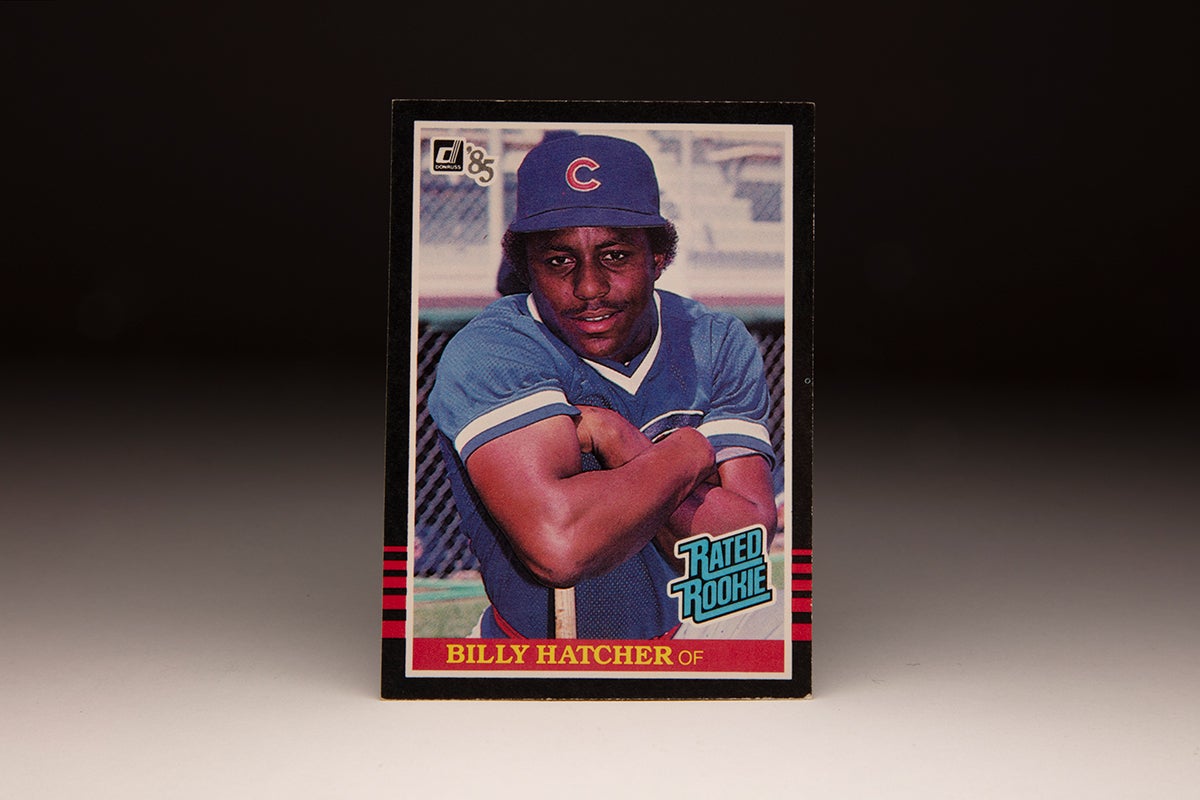
Baseball was Hatcher’s passion, and he focused on a college career when his mother encouraged him to turn down the Expos’ offer after Montreal selected him in the 30th round of the 1979 MLB Draft. He had set school records for runs scored and stolen bases, and as a junior pitched an 11-inning no-hitter.
But Jim Brock, head coach of the perennial powerhouse Arizona State Sun Devils, was unimpressed.
“He had the worst swing I ever saw,” Brock told the Arizona Republic during the 1990 World Series. “When he swung, he stopped his bat at the plate. He had no follow-through. None.”
Hatcher enrolled at Yavapai Community College in Prescott, Ariz., and became a junior college star, earning first-team All-America honors in 1981. The Astros had selected Hatcher in the second round of the January 1980 MLB Draft but he returned to school before being selected in the sixth round of the January 1981 MLB Draft by the Cubs. This time, Hatcher signed a pro contract and reported to Geneva of the New York-Penn League, where he hit .280 with 57 runs scored and 40 RBI in 75 games.
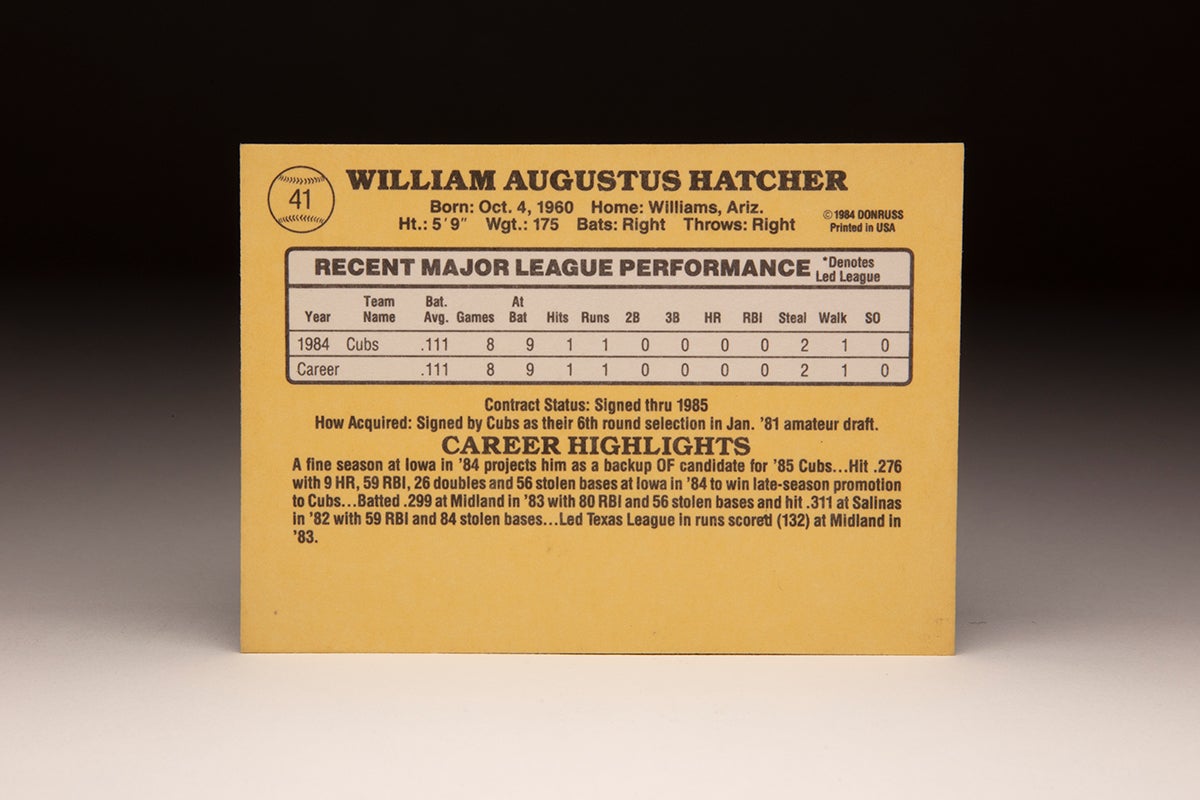
In 1982, Hatcher was promoted to Salinas of the Class A California League, where he ran wild – stealing 84 bases while hitting .312 with 59 RBI and 92 runs scored. Then in 1983, Hatcher scored 132 runs for Double-A Midland while hitting .299 with 54 extra base hits, 80 RBI and 56 steals. In the Texas League All-Star Game, Hatcher hit a home run that was measured at 450 feet.
“I feel I’m doing all right, but I hope to do better,” Hatcher told the Arizona Daily Sun during the 1983 season. “There’s still room for improvement.”
By this time, Hatcher’s younger brother, Johnny, was in the Braves system after being drafted from Yavapai Community College in 1982. Johnny never made it past Triple-A but in the spring of 1984 he was still ascending in the Braves system.
Billy, meanwhile, was invited to the Cubs’ big league camp in 1984 and was seen as one of the team’s top prospects.
“The advance billing on him and the scouting reports I had were exactly what he’s shown here,” Cubs manager Jim Frey told United Press International about Hatcher in the spring of 1984. “He’s gotten hits and stolen bases and done some very good things. Everything I had been told about him has come true.”
Hatcher played most of the 1984 season with Triple-A Iowa, hitting .276 with 56 steals, 59 RBI and 96 runs scored in 150 games. The Cubs brought him to Chicago in September as they battled the Mets for the National League East title, and Hatcher made his big league debut Sept. 10 against the Phillies as a pinch-hitter. He appeared in eight games down the stretch, and though he was left off the postseason roster, Hatcher was clearly viewed as one of the future stars in Chicago.
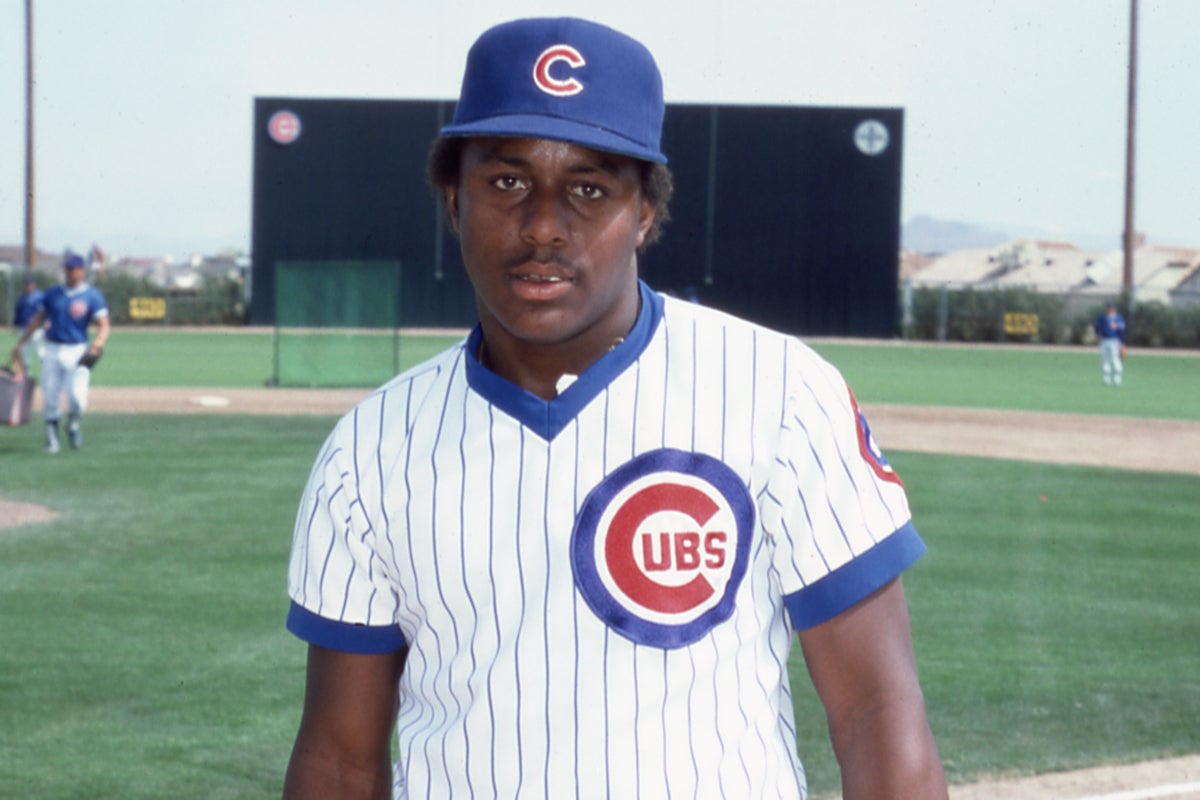
Hatcher played well in the spring of 1985 but was sent back to Iowa due to a crowded outfield in Chicago that featured veterans Gary Matthews, Bob Dernier, Keith Moreland and Davey Lopes. He was playing well in Triple-A when Dernier and Lopes got hurt in June. But when the Cubs came calling, Hatcher was hurt after injuring his wrist the day before on a stolen base attempt. The Cubs then called up Double-A outfielder Darrin Jackson.
“It had me worried,” Hatcher told the Arizona Republic of the missed opportunity. “Sometimes you get injured and give somebody else that opportunity, and you might never get another chance.”
But when Jackson was unable to cope with big league pitching, Hatcher was brought to Chicago in late June when his wrist healed. He stayed with the team into late July when Matthews returned from the disabled list and was sent back to Iowa. He returned in August only to suffer another wrist injury that sidelined him for three weeks before he returned for good in September.
For the season, Hatcher played in 53 games with the Cubs, hitting .245 with 24 runs scored. But his career path was about to undergo a radical shift.
On Dec. 16, 1985, the Cubs traded Hatcher and a player to be named (which became Steve Engel) to the Astros for veteran outfielder Jerry Mumphrey.
“We hated to include a player of Hatcher’s potential in the deal,” Cubs assistant general manager John Cox told the Associated Press. “But to get a player of Mumphrey’s caliber, we had little choice.”
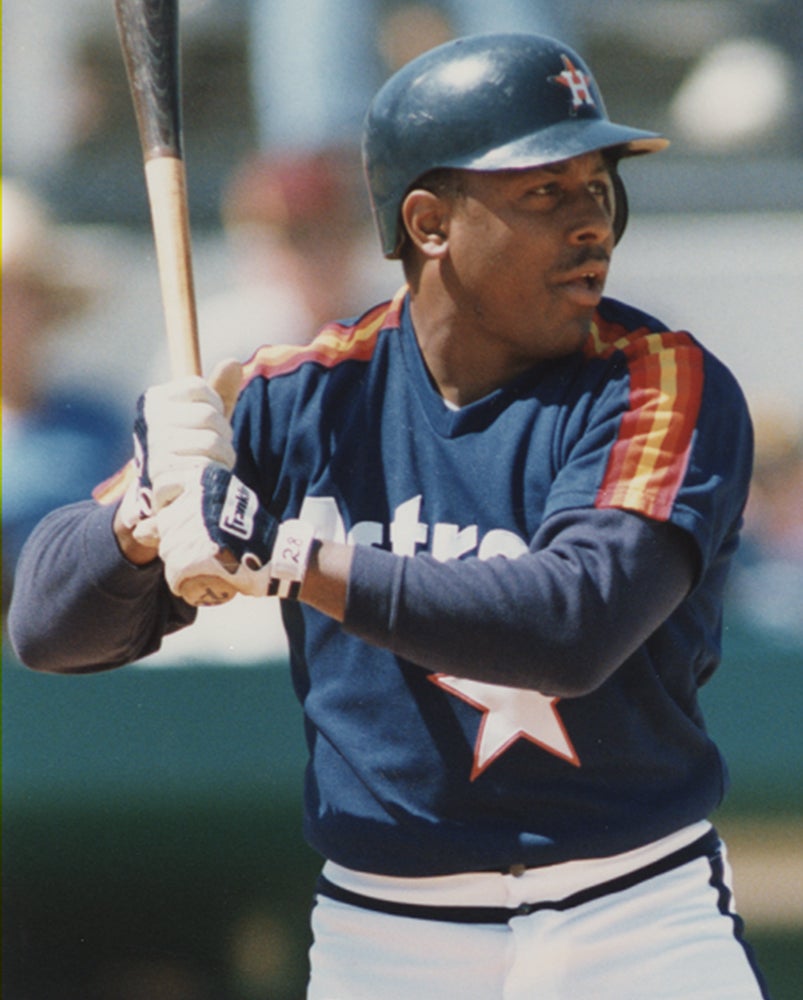
New Astros manager Hal Lanier welcomed Hatcher’s athleticism as he reworked Houston’s lineup.
“I liked his speed and the way he played defense,” Lanier told the AP. “Billy is the kind of player who is in the mold of the way we want to build the ballclub. He is very aggressive and enthusiastic.”
Hatcher won the Opening Day right field job in 1986 and by June was entrenched in center field. He appeared in 127 games that season, hitting .258 with 55 runs scored and 38 steals as the Astros defied predictions and won the National League West title.
In the NLCS vs. the Mets, Hatcher had four hits in the first five games – though he went hitless in Houston’s two wins by ace Mike Scott. But in Game 6, Hatcher carved his name into history. He scored a run in the first inning after reaching base on a fielder’s choice and added an infield single in the fifth. The game advanced to extra innings when the Mets tied the game with three runs in the top of the ninth – Hatcher had trouble with two fly balls that turned into hits that inning – and New York took a 4-3 lead in the top of the 14th. But with one out and no one on base in the bottom of the frame, Hatcher hit a 3-and-2 pitch off Jesse Orosco off the left field foul screen at the Astrodome, tying the game again.
Hatcher jogged backwards to first base while watching the ball, hoping it would stay fair.
“He knows he’s got enough wood on it but is it gonna stay fair?” ABC’s Keith Jackson asked rhetorically while watching a replay of the home run.
After a scoreless 15th inning, the Mets scored three runs in the 16th to take a 7-4 lead. But the Astros again rallied, with Hatcher driving home Davey Lopes to make the score 7-5 before he was forced out at second on a Denny Walling grounder. But Glenn Davis followed Walling with another single, scoring Bill Doran to make the score 7-6.
Working his third inning of relief, Orosco then struck out Kevin Bass to end the game and the series – nullifying a possible third Mike Scott start in Game 7. Scott was named the NLCS Most Valuable Player.
To that time, it was the longest postseason game in AL/NL history.
“A game like this takes it out of you,” Hatcher told the Baltimore Evening Sun after Game 6. “I feel like I want to go someplace, close the door, drink two or three beers and pass out.”
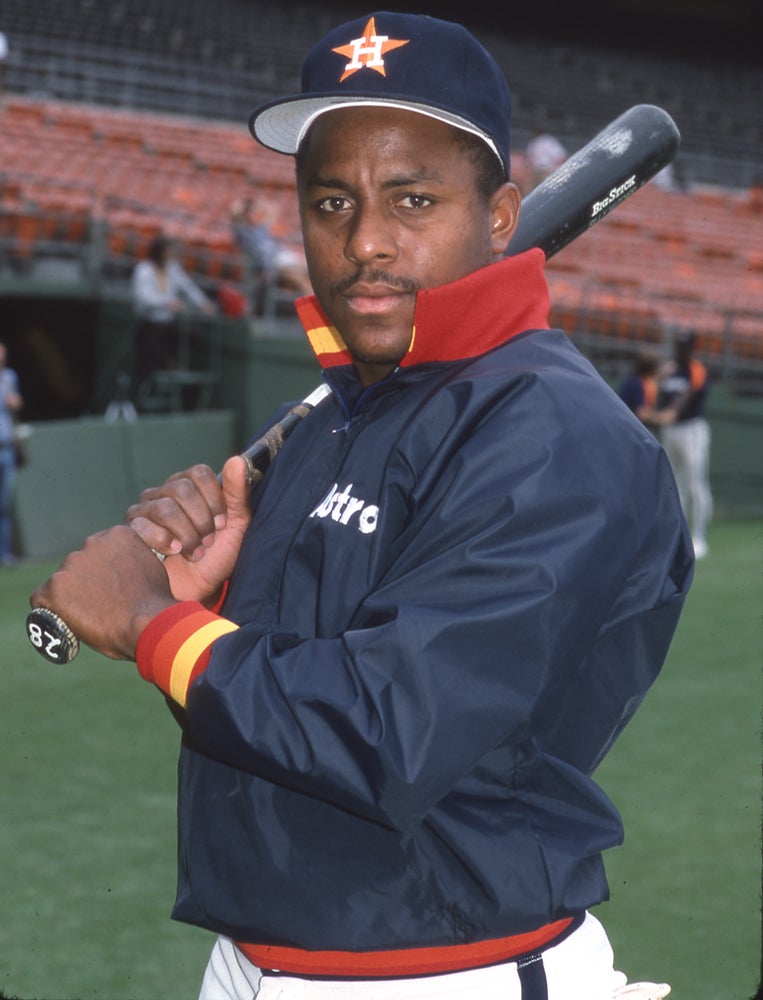
Hatcher compiled what would be his best big league season in 1987, hitting .296 with 28 doubles, 96 runs scored, 11 homers, 63 RBI and 53 steals. But the Astros fell to 76-86.
Then in 1988, the Astros moved Hatcher to left field as Gerald Young took over in center, with Hatcher hitting .268 with 79 runs scored, 52 RBI and 32 steals. And after falling into a deep slump in 1989, Houston traded Hatcher to Pittsburgh on Aug. 18 in exchange for outfielder Glenn Wilson.
Some viewed the trade as a cost-cutting measure as Hatcher was making $495,000 compared to $750,000 for Wilson, who was hitting .282 with Pittsburgh compared to .228 for Hatcher. When Hatcher struggled with the Pirates, many criticized the deal.
“(General manager) Larry Doughty has the final say…but we wanted Billy Hatcher for Glenn Wilson,” Pirates manager Jim Leyland told the Pittsburgh Post-Gazette in late August when the Pirates were out of the NL East race. “I voted to make that trade. The coaches voted to make that trade. It was unanimous. We got Billy Hatcher because we thought he would be a better player for us than Glenn Wilson. Period.”
Hatcher finished the 1989 season with a .231 batting average and 24 steals in 135 games. Then on April 3, 1990, the Pirates traded Hatcher to the Reds in exchange for infielder Jeff Richardson and pitcher Mike Roesler. Six days later, Hatcher was Cincinnati’s Opening Day left fielder. The Reds jumped out to a 9-0 start (with Hatcher getting hits in eight of those games) and led the NL West wire-to-wire, with Hatcher hitting .276 with 28 doubles, 68 runs scored and 30 steals.
In the NLCS, the Reds faced Pittsburgh – and Hatcher made the trade look even better from the Cincinnati perspective as he hit .333 in the four games he played, including a 3-for-4 performance with a home run and a double in a 6-3 Reds win in Game 3. Hatcher had two more hits in the deciding Game 6 as Cincinnati advanced to the World Series.
It would be a week that would carve Hatcher’s name into the record books.
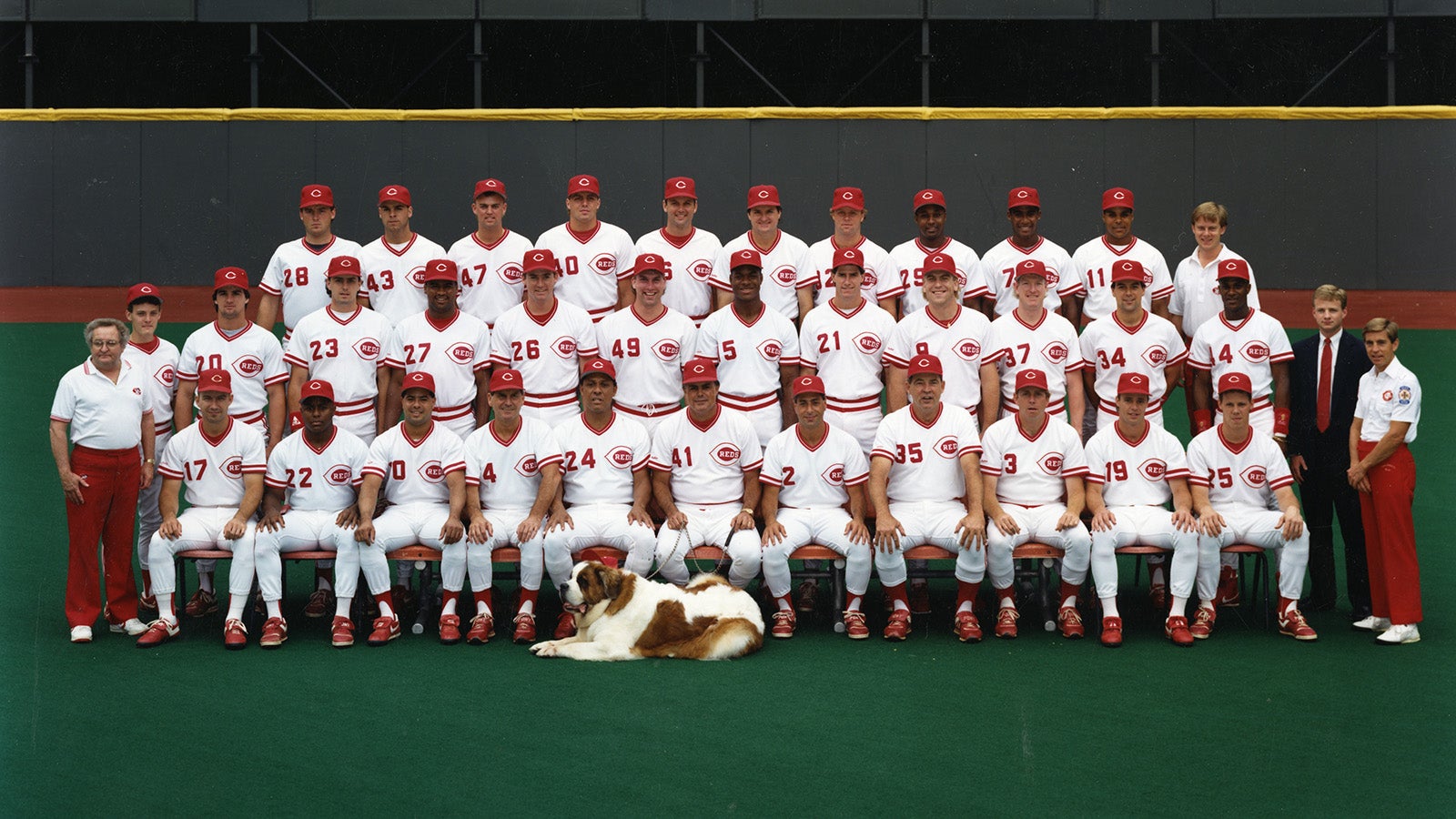
The Reds entered the Fall Classic as heavy underdogs against the defending champion Oakland A’s. But Cincinnati won Game 1 7-0 as Hatcher went 3-for-3 with a walk, two doubles and three runs scored. He followed up by going 4-for-4 with two more doubles, a triple, a walk and two runs scored in a 5-4 win in Game 2 – scoring the game-tying run in the eighth inning before Cincinnati won it in the 10th.
He became the first player in World Series history to record seven hits in seven straight at-bats.
“I said two months ago, the reason we were in position to win (the National League West) was because we got Billy Hatcher,” Reds teammate Ron Oester told the Associated Press. “Nobody plays the game harder than him.”
Hatcher had two more hits and a run scored in the Reds’ 8-3 win in Game 3. Then in his first at-bat in Game 4, Hatcher was hit in the hand by a pitch from Oakland’s Dave Stewart. He was caught stealing that inning then left the game in the bottom of the second. The Reds completed the series sweep that day, and Hatcher finished 9-for-12 with six runs scored, four doubles, a triple and two RBI. His .750 batting average broke the record of .625 set by Babe Ruth in 1928 and continues to be the World Series standard.
Incredibly, Hatcher was not named the World Series Most Valuable Player – an award that went to teammate José Rijo, who was 2-0 with an 0.59 ERA in two starts.
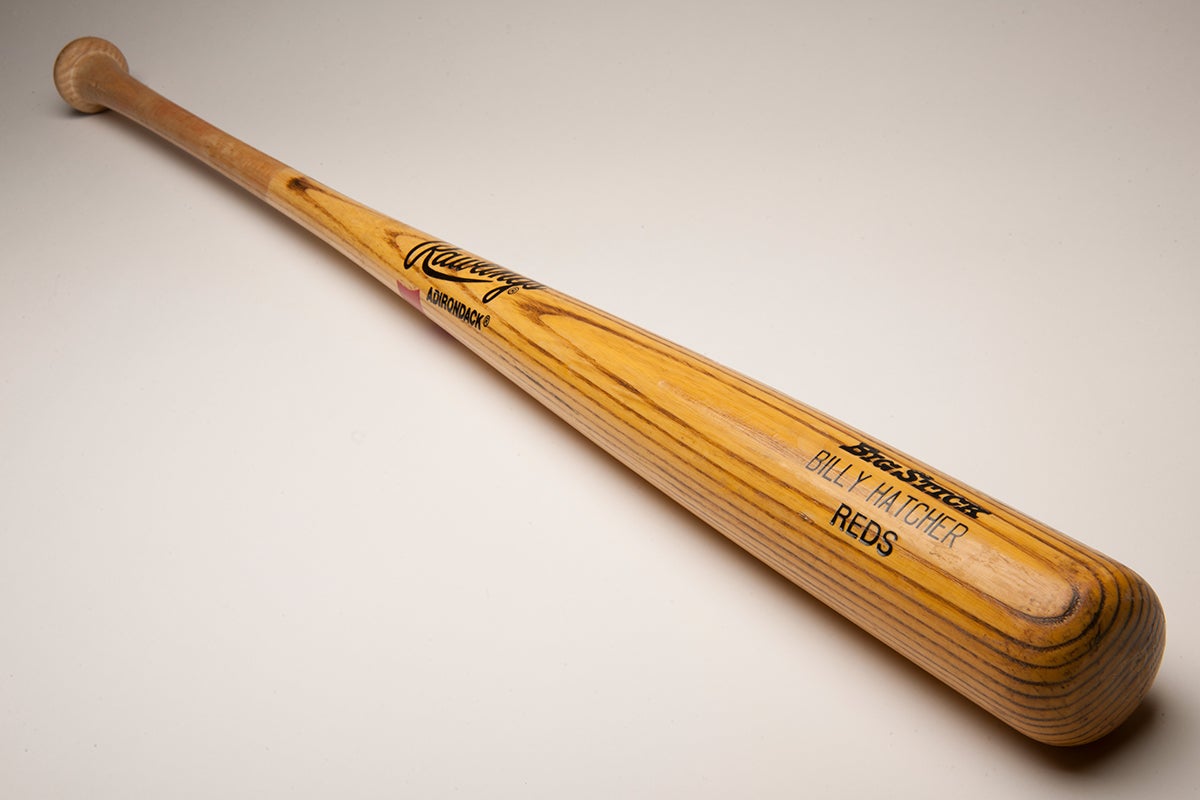
“I’m seeing the ball come out of the pitcher’s hand. I can even see the seams,” Hatcher told the AP. “Hey, I have confidence in myself. I remember one time when I went 13-for-15. I have confidence I can hit.”
In early 1991, Hatcher signed a two-year deal with Cincinnati worth a reported $3.2 million. His bruised hand had healed by the start of Spring Training but he was still nursing a sore left shoulder suffered in a head-first slide in August.
Reds manager Lou Piniella, however, wasted no time naming Hatcher his starting left fielder for 1991.
“When it’s time to play, (Hatcher) plays hard,” Reds shortstop Barry Larkin told the Cincinnati Post. “But in the clubhouse, he’s funny and good-natured all the time. Over a long season, you need that kind of person.”
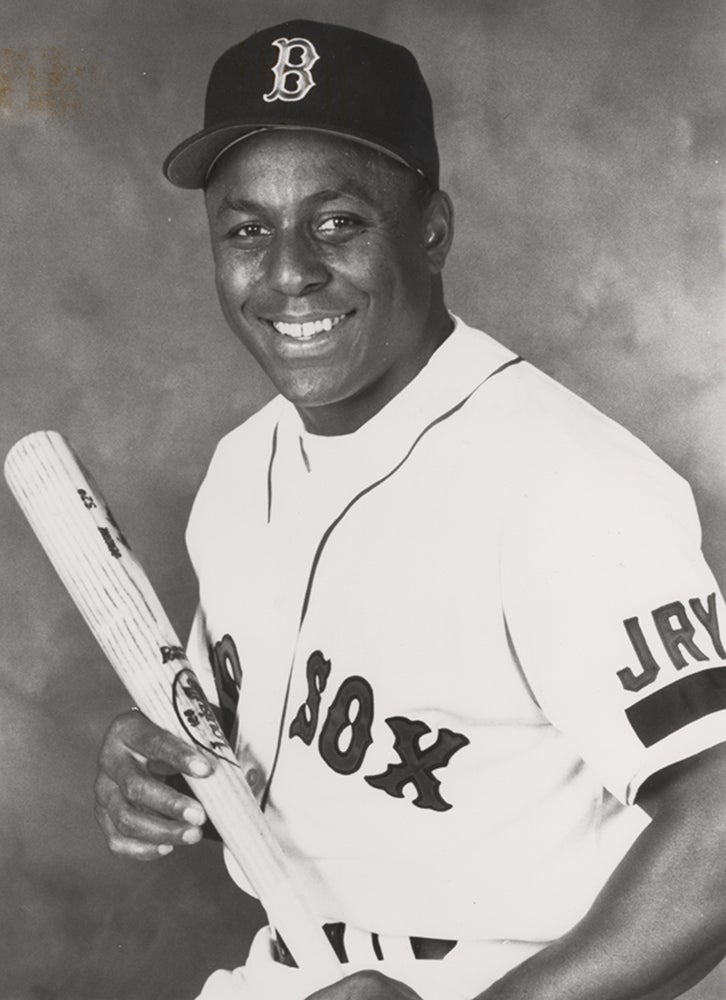
Hatcher put up his usual solid numbers in 1991, batting .262 with 25 doubles. But the Reds suffered through injuries and clubhouse issues to finish 74-88. And after appearing in just 43 games in 1992, Hatcher was traded to the Red Sox for pitcher Tom Bolton on July 9, 1992. He struggled to hit in Boston, finishing the year with a .249 batting average and just four steals in 118 games.
But the Red Sox brought Hatcher back in 1993 and brought in a new hitting coach in Mike Easler, who helped Hatcher adjust to the offspeed-heavy approach of AL pitchers.
“(Easler) preaches patience, and that’s what you need in this league,” Hatcher told the Sunday Republican of Springfield, Mass. “They don’t walk much in the National League.”
Hatcher had his last season as a regular in 1993, hitting .287 with 71 runs scored and 57 RBI in 136 games. But in 1994, Hatcher was traded to the Phillies on May 31 in a deal that brought Wes Chamberlain to Boston. He finished that strike-shortened season hitting .245 in 87 games before becoming a free agent and signing with the Texas Rangers right at the start of the 1995 regular season. He appeared in just six games before being released, then signed with the Royals in June and played in a handful of games in Triple-A but did not make it back to the majors.
Hatcher would not play organized ball again, but his second act as a coach began in 1996 in the minor league system of the expansion Devil Rays. In Tampa Bay’s first year in the American League in 1998, Hatcher was hired as the team’s first base coach – a job he held for two years before moving to third base coach for two seasons and then to bench coach and back to first base through 2005.
In 2006, Hatcher joined the Reds as their first base coach and stayed with the on-field staff through the 2018 season. Hatcher later coached first base for the Marlins in 2020.
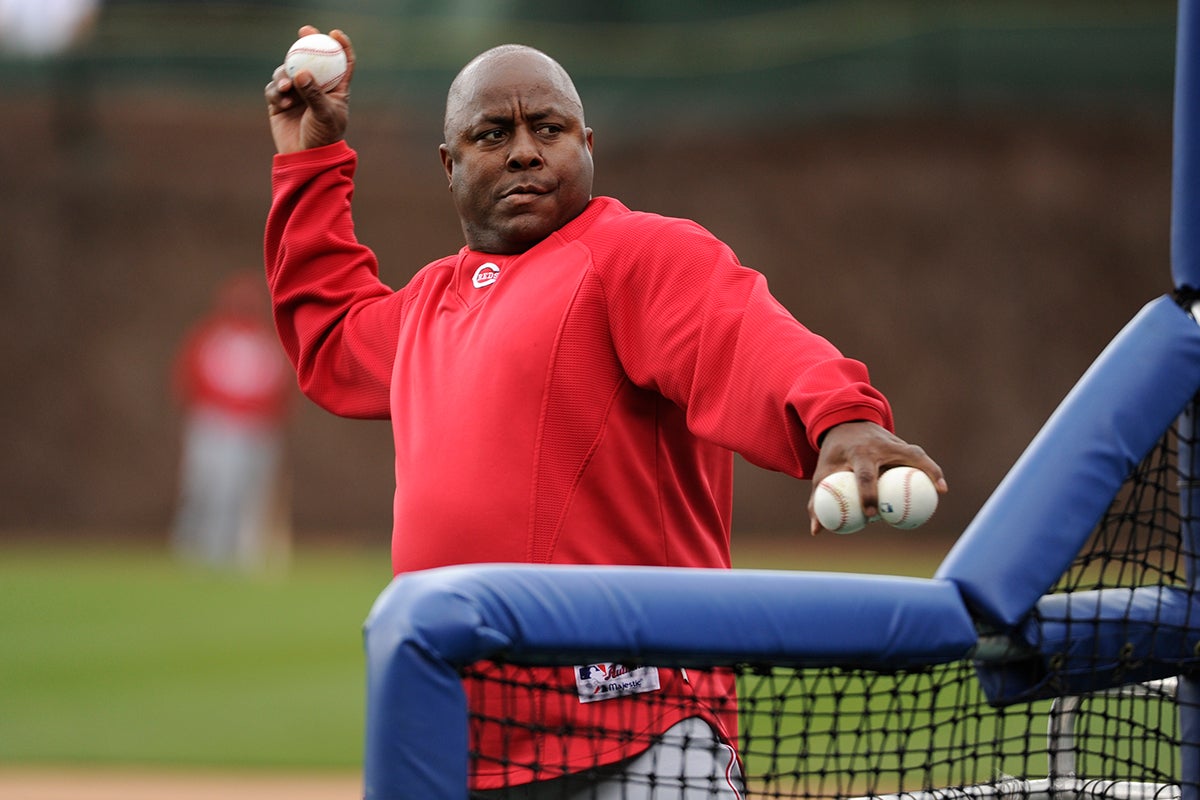
Over 12 big league seasons, Hatcher played for seven teams, totaling 586 runs scored, a .312 on-base percentage and 218 steals. But it was during the postseason that Hatcher made an indelible mark on the game’s history.
A baseball lifer, Hatcher turned his all-around athletic ability into a career that spanned four decades.
“I’ve got no second thoughts about baseball,” Hatcher told the Arizona Daily Sun in 1983. “I played all those other sports (basketball, football and track) but baseball was always my real love in sports. This is what I’ve been working for all my life.”
Craig Muder is the director of communications for the National Baseball Hall of Fame and Museum
